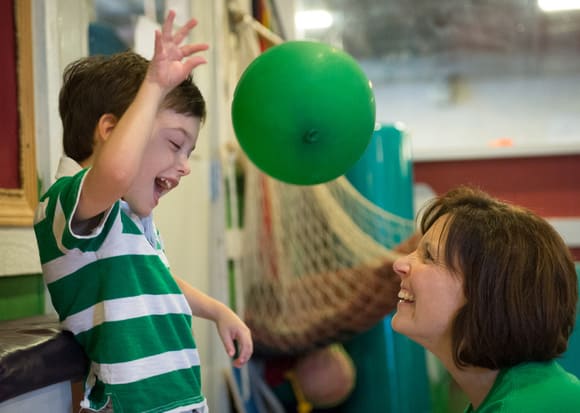As a highly specialized pediatric clinic, Children’s TherAplay works within certain parameters. The following questions will help you determine whether treatment at Children’s TherAplay is a good fit for your child.
1. What kinds of special needs?
Our clinic serves children with a wide variety of diagnoses. Any child who is in need of quality physical and/or occupational therapy may be appropriate to receive therapy at Children's TherAplay.
2. Are you looking for hippotherapy?
Here at Children's TherAplay we incorporate the treatment strategy of hippotherapy into pediatric occupational and physical therapy sessions. We do not offer therapeutic/adaptive riding, which is a sport/activity.
3. Will you have a prescription?
Children’s TherAplay is a medical facility and a prescription is required for treatment. When the initial evaluation is scheduled, a member of our staff will contact your child’s physician for a prescription as well as a medical form that indicates appropriateness and any contraindications.
4. How old is your child?
We treat children from the ages of 18 months (two years for kiddos with Down syndrome, due to atlantoaxial instability) up to 13 years.
About Those Tweens
- The maximum age for new/prospective patients, at the date of their initial evaluation, is 12.5 years.
- Established patients may continue receiving treatment until their 13th birthday or until they reach our weight limit.
5. How much does your kiddo weigh?
A weight limit is in place and at the discretion of the treating therapist to ensure safety.
We treat children up to 80-100 pounds based upon the child’s functional status. A lesser weight limit of 40 pounds may be implemented for children requiring more assistance with sitting and ambulation.
6. Can your child tolerate wearing a riding helmet?
All patients must be able to tolerate being fitted with and wearing an approved riding helmet for the duration of each on-the-horse treatment.
7. What is your child’s head control like?
Children must have adequate head control to be able to tolerate the movement of the horse.
8. Any contraindications?
As with any other treatment strategy, there are certain conditions – allergies to horses, for example – that do not mix well with hippotherapy. When the evaluation is scheduled, the referring physician will be asked to complete a medical form to confirm appropriateness and clear the patient of any possible contraindications. Review the short list of contraindications.
Ready for the next step?Go to Step 2: Initiate the self-referral process |



